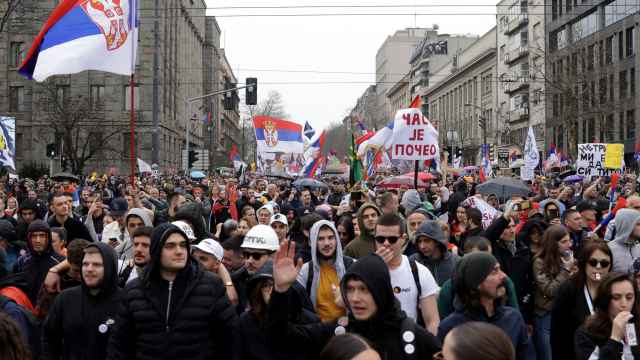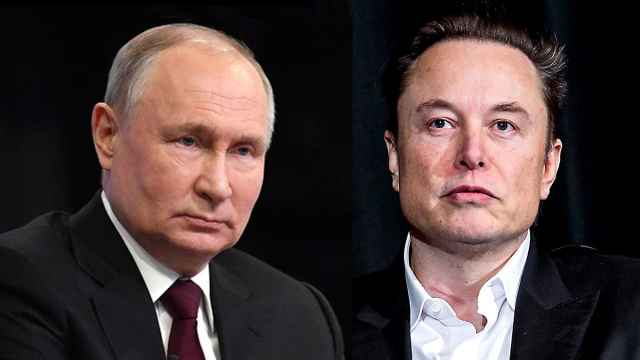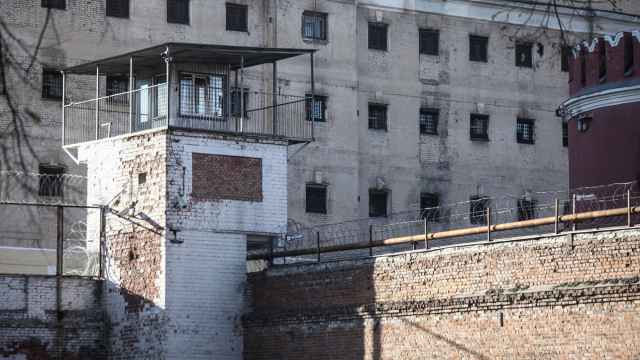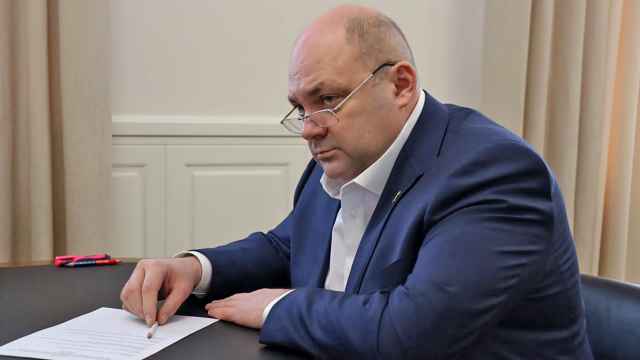After two years, the global financial crisis has abated and the world economy is set to grow by an impressive 4.8 percent this year. Most governments, apart from some Western culprits, are congratulating themselves for their good crisis management. Astoundingly, this severe crisis has hardly changed political or economic regimes anywhere in the world so far, while many incumbent governments have lost elections.
A comparison between Russia and the 10 new eastern members of the European Union — here called the Central and East European 10, or CEE-10 — offers a perspective on what Russia did well and poorly in the financial crisis.
Eastern Europe was the part of the world worst hit by the financial crisis. Latvia led the pack with a fall of 18 percent of gross domestic product in 2009. On average, however, the 10 new EU members had a GDP decline of “only” 5 percent, about the European average (mainly because of Poland’s growth of 1.7 percent), while Russia’s GDP slumped by no less than 8 percent, more than in any Group of 20 economy.
The direct cause of Russia’s larger contraction was that its exports plunged by 36 percent in 2009, while the CEE-10 exports diminished comparatively little, by less than 10 percent. The Russian export slump was caused by two factors: falling prices of oil, metals and gas and a big decline in gas export volumes. The CEE-10 were saved by their deep integration into the European market and impressive diversification of exports.
In late 2008, all feared that banking systems would collapse, but with the exception of Ukraine that did not happen anywhere in the region. Only one significant bank collapsed, the domestically owned Parex Bank in Latvia. But the bank rescue mechanism was diametrically different. The European Central Bank issued plenty of liquidity salvaging the West European banks, which owned most East European banks and allowed them to share their ECB liquidity. As a result, no single foreign-owned bank in the CEE-10 went under during the crisis.
In Russia, the government bailed out Russian banks through a gradual devaluation during the three months of November 2008 to January 2009. It cost the country $150 billion in reserves, much of which amounted to bank subsidies. In parallel, the government poured money into the already dominant state banks. Presumably, the European crisis resolution was cheaper for the governments and left the economy more competitive.
Only three Central and East European countries required emergency standby programs with the International Monetary Fund — Hungary, Latvia and Romania — although five countries had foreign debts exceeding their GDP, and all had small reserves. Russia benefited surprisingly little from its enormous reserves of $600 billion in August 2008, although its foreign debt was less.
Russia has carried out one important reform during the crisis, characteristically in the macroeconomic realm: a change in the exchange rate policy. The country is now close to inflation targeting, with a floating exchange rate that has worked so well in many countries around the world, from Poland to Chile. This is a good choice for Russia because of its great dependence on fluctuating commodity prices. No CEE-10 country changed its exchange rate policy.
The biggest difference between the CEE-10 and Russia has been in fiscal policy. The Baltic states in particular have undertaken huge cuts in their public expenditures of 8 to 10 percent of GDP, which have facilitated beneficial structural reforms. Many countries have sacked superfluous bureaucrats and other public servants. Latvia has cut public wages by 35 percent and Romania by 25 percent. Latvia has eliminated half of its state agencies and closed half of its hospitals. Finally, teachers have been let go after the number of children has plummeted with lower birthrates. Lithuania has carried out a progressive higher education reform. Yet pensions have been shielded everywhere but in Hungary. As a consequence of all these reforms, the CEE-10 countries are likely to arise more efficient and competitive after the crisis. Like Russia, all of them have already returned to economic growth.
Russia, by contrast, has pursued the opposite policy, carrying out small cuts in many areas and not promoting structural reforms. Strangely, the government has raised pensions this year by 30 to 40 percent. After having carried out an admirably conservative fiscal policy since 1999, the Russian government has suddenly turned populist. It is no problem that the budget deficit will be 4 to 5 percent of GDP this year, which makes perfect sense as stimulus, but public funds are being spent on pensions rather than on the modernization of Russia. Structural reforms remain stalled since 2003.
The key difference between the CEE-10 and Russia in their anti-crisis policies is that the CEE-10 turned against populism during the crisis, while the almighty Russian prime minister embraced populism. This difference derives from the political systems. In a democracy, people mature in crisis. In the CEE-10, social unrest has been minimal, while it has grown in Russia and frightens the White House. Today, moderate center-right parties rule all but one of the CEE-10 countries, and this year responsible center-right parties have won three surprise victories — in the Czech Republic, Slovakia and Latvia.
As the new Czech Foreign Minister Karel Schwarzenberg stated: “We won by telling the truth. Populism is no longer popular.” Most remarkable was the victory of Latvian Prime Minister Valdis Dombrovskis on Oct. 2. His coalition extended its share of the parliamentary seats from 45 percent to 63 percent, despite the shocking fall in GDP. However, Dombrovskis blamed his irresponsible predecessors and voters clearly saw him as the most credible and honest problem solver. Voters are not as irredeemably irresponsible as the Russian elite thinks. The liberal right has never been stronger in this part of the world. The communists have been wiped out and the socialists badly weakened.
Russia would be better off economically if it had offered its citizens the right to influence its government as the democratic countries in Central and Eastern Europe do.
Anders Åslund is a senior fellow of the Peterson Institute for International Economics and author of the book “The Last Shall Be the First: The East European Financial Crisis, 2008-10.”
A Message from The Moscow Times:
Dear readers,
We are facing unprecedented challenges. Russia's Prosecutor General's Office has designated The Moscow Times as an "undesirable" organization, criminalizing our work and putting our staff at risk of prosecution. This follows our earlier unjust labeling as a "foreign agent."
These actions are direct attempts to silence independent journalism in Russia. The authorities claim our work "discredits the decisions of the Russian leadership." We see things differently: we strive to provide accurate, unbiased reporting on Russia.
We, the journalists of The Moscow Times, refuse to be silenced. But to continue our work, we need your help.
Your support, no matter how small, makes a world of difference. If you can, please support us monthly starting from just $2. It's quick to set up, and every contribution makes a significant impact.
By supporting The Moscow Times, you're defending open, independent journalism in the face of repression. Thank you for standing with us.
Remind me later.






